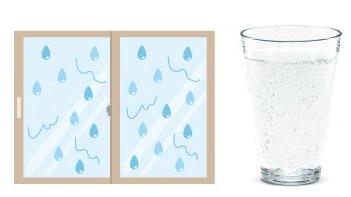What are the many water droplets on the window glass?
Did you open the curtains on a cold winter morning and see water droplets on the windows? It makes me want to draw with my fingers. Now where did this water come from? In fact, water can transform into many different shapes. Let's learn the secret and look for the transformed form of water around us.
What is the water in the window? If you put water in a cold freezer, it will turn into ice, and if you heat it up, it will turn into hot water. At that time, bubbles will come out from the bottom of the pan. There is no air in the bottom of the pot. Those bubbles are water that has become small particles invisible to the naked eye. When the temperature rises and the water becomes invisible, it is called water vapor. The water vapor that forms bubbles rises to the surface of the water and jumps out into the air. There is always a lot of water vapor in the air.
When this water vapor touches something cold, it turns back into visible water again. On winter mornings, it's colder outside than inside the house. The window, which was cold due to the cold outside, was touched by the steam nearby and returned to water. This is called "condensation".
How to prevent condensation?

Condensation on windows can cause mold and mites to appear, and can damage floors and curtains if left unattended. Let's know the necessary points to prevent condensation as much as possible.
Let's ventilate Open the window from time to time to let the warm air near the window escape. Excess water vapor will escape. It is also recommended to use an aeration fan.
Do not overheat the room Condensation is likely to form when there is a large temperature difference between the outside and inside the room. Even when you turn on the heater, don't let the temperature rise too much, such as by putting on an extra coat.
Place the humidifier away from the windowDon't raise the humidity near the window too much. However, the entire room can be dry, so keep the humidifier away from the window.
How to prevent mold? If the condensation is not wiped off, it will cause mold. Wipe off as often as possible with a rag or newspaper. At that time, if you wipe from the bottom to the top, the water will not drip. In addition, spraying alcohol once every few days will prevent mold.
There are also windows that are hard to condense!
There is a way to prevent condensation by adding another window to the inside of the original window and making it double. The window attached to the inside is also called "in-plus", and by creating a layer of air between this window and the original window, it reduces the temperature difference between the outside and the room.
